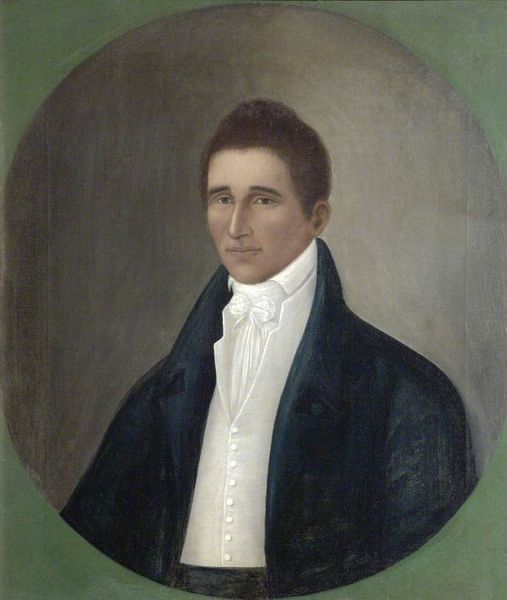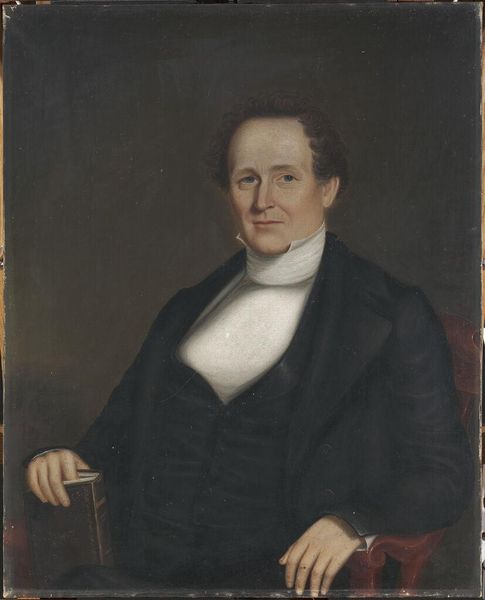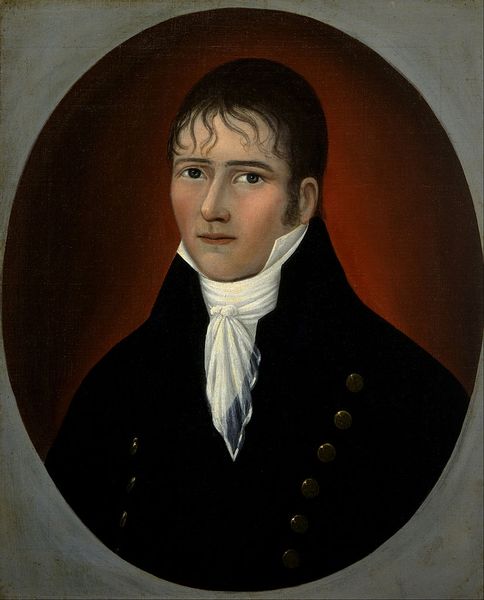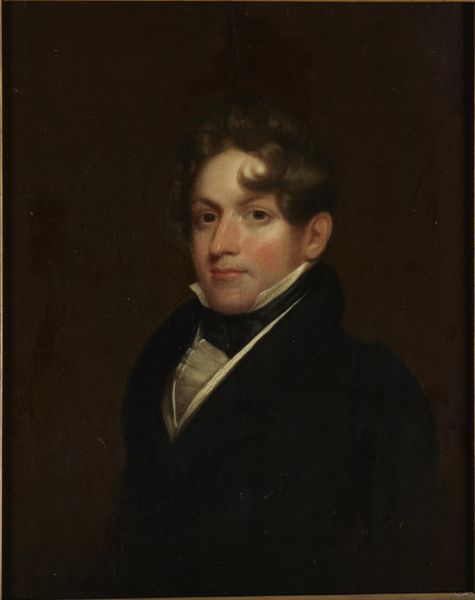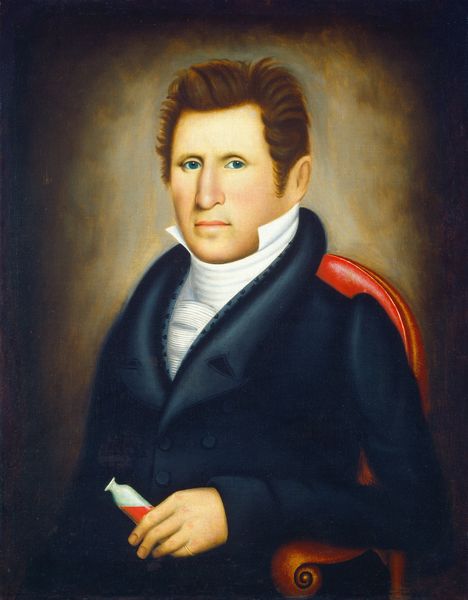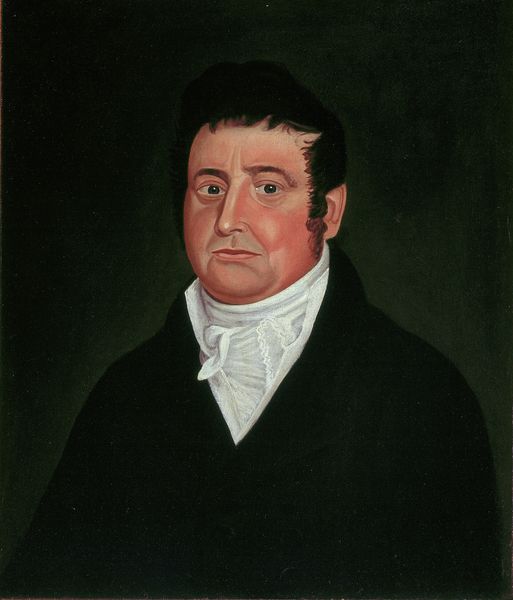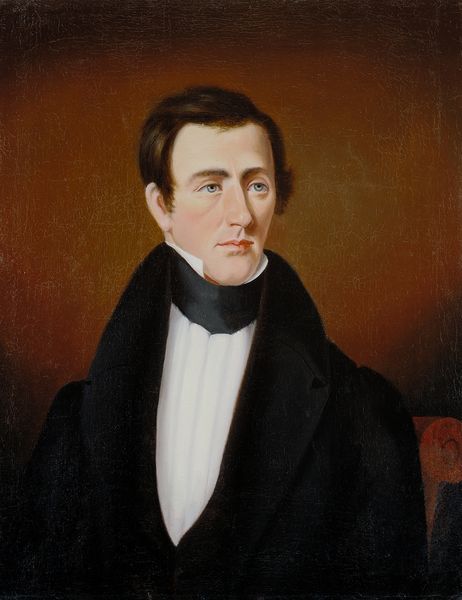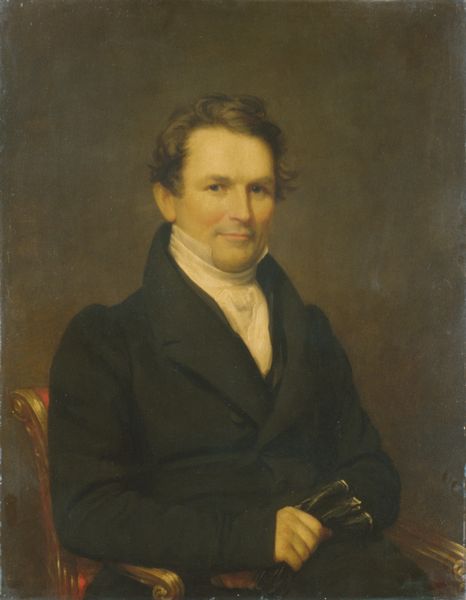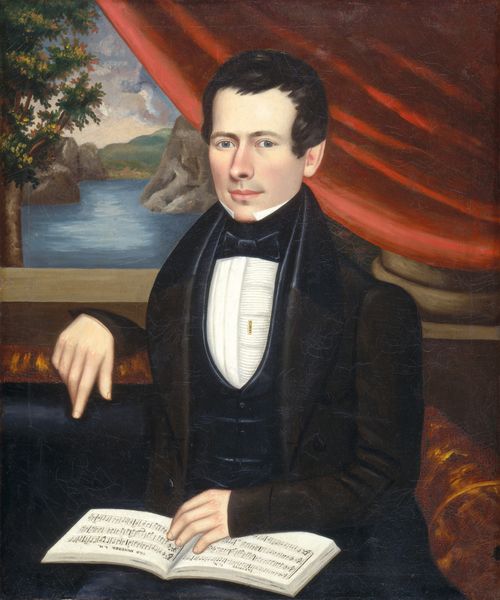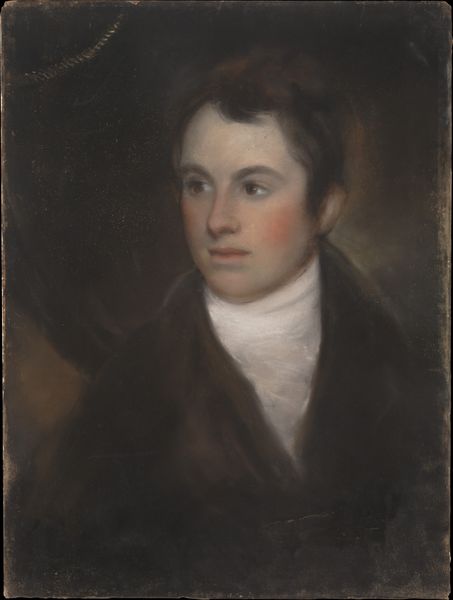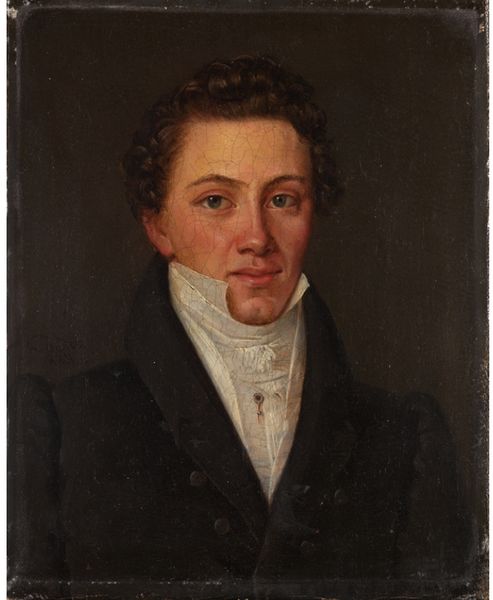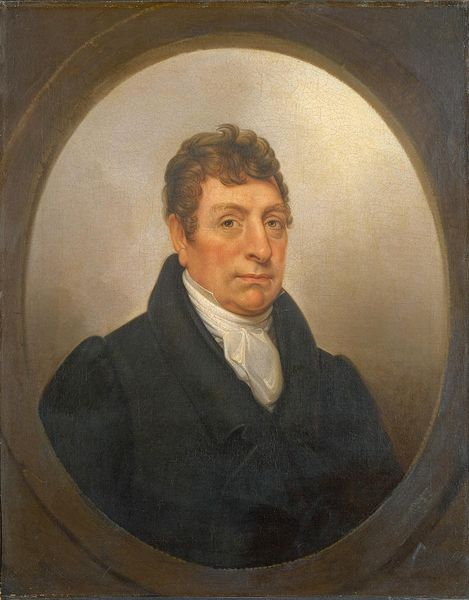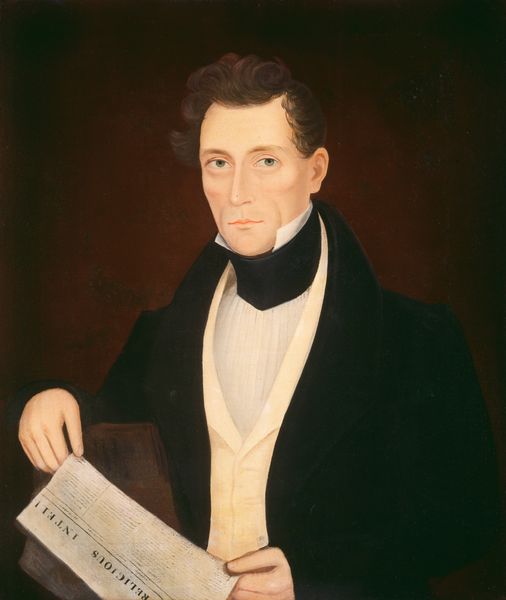
painting
#
portrait
#
painting
#
portrait reference
#
portrait head and shoulder
#
romanticism
#
animal portrait
#
animal drawing portrait
#
portrait drawing
#
facial portrait
#
academic-art
#
portrait art
#
fine art portrait
#
celebrity portrait
#
digital portrait
Dimensions: overall: 76.4 x 58.5 cm (30 1/16 x 23 1/16 in.) framed: 83.2 x 65.4 x 5.7 cm (32 3/4 x 25 3/4 x 2 1/4 in.)
Copyright: National Gallery of Art: CC0 1.0
Editor: So, this is "Biel Le Doyt," painted in 1827 by Erastus Salisbury Field. It's an oil painting, quite a striking portrait. It almost has a stoic quality. What do you see in this piece? Curator: What immediately strikes me is how this portrait functions as a representation of early 19th-century American identity. The subject's attire and demeanor reflect a rising middle class seeking to establish itself through symbols of respectability and civic virtue. Notice the emphasis on presenting a clean, almost idealized image, yet consider whose stories aren't being told. Editor: You mean how portraiture often excludes marginalized communities? Curator: Exactly. The painting acts as a kind of cultural gatekeeper. But also, consider Field's role as an itinerant artist; How did this dynamic between artist and sitter reflect social power, negotiations of status and influence? Did this individual commission the work, or was this work meant to signal a particular status? Editor: It's fascinating how one portrait opens up questions of representation, social standing, and power dynamics. Curator: Yes, and thinking about these historical contexts allows us to challenge assumptions about who is represented and whose stories get told. It really invites us to interrogate the narrative that early American art often presents. Do you think that the almost stern expression can be seen as performative, indicative of an attitude or posture that the sitter felt was required to be taken seriously by society at the time? Editor: Yes! Thinking about it now, it very much gives an attitude, maybe even something forced! It's something I wouldn't have picked up myself. Thank you. Curator: Of course! Considering these perspectives certainly enriches our experience and understanding of art.
Comments
No comments
Be the first to comment and join the conversation on the ultimate creative platform.
